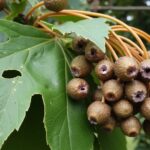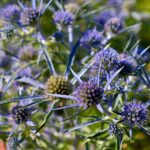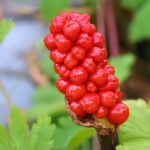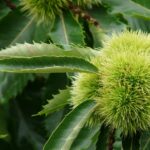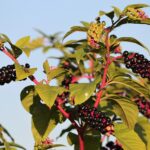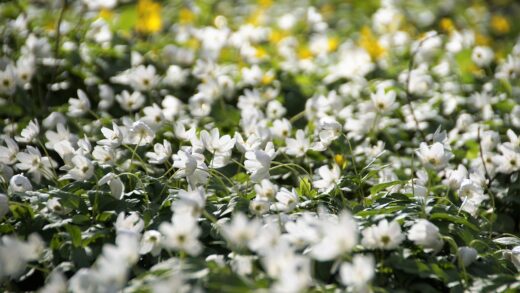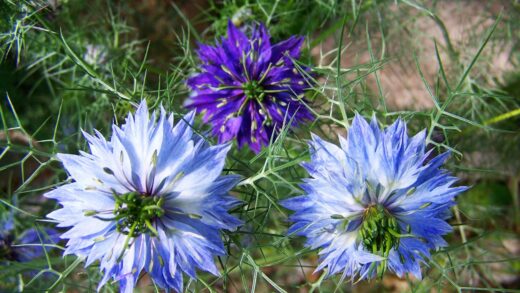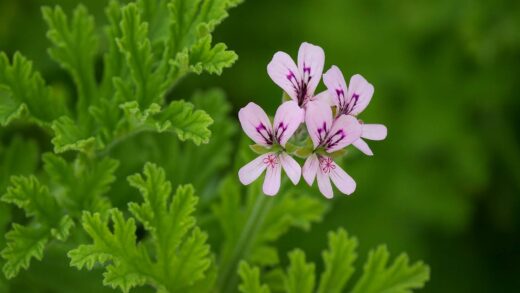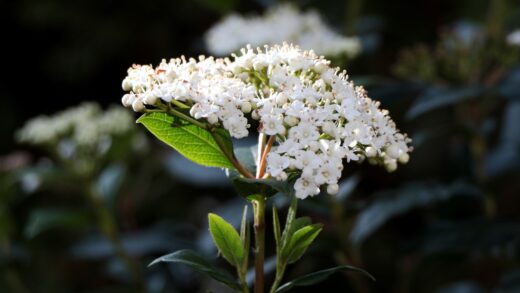Providing a lemon tree with the correct balance of nutrients is absolutely essential for its vitality, influencing everything from the lushness of its foliage to the quality and quantity of its fruit. Lemon trees are known as heavy feeders, meaning they have a high demand for nutrients to support their vigorous growth cycles, which include flowering, fruiting, and vegetative flushes. A comprehensive fertilization program must supply not only the primary macronutrients but also a full suite of essential micronutrients. Failing to meet these specific dietary needs will inevitably lead to deficiencies, poor growth, and a disappointing harvest.
The foundation of any good lemon tree fertilization plan is a balanced fertilizer specifically formulated for citrus plants. These specialized formulas are designed to provide the key macronutrients—nitrogen (N), phosphorus (P), and potassium (K)—in the appropriate ratios for citrus health. Nitrogen is arguably the most critical nutrient, as it is the primary driver of leaf and stem growth, giving the tree its deep green color. Phosphorus is vital for energy transfer, root development, and flowering, while potassium plays a crucial role in disease resistance, water regulation, and the development of large, juicy fruit.
Beyond the “big three” macronutrients, the importance of micronutrients cannot be overstated. Elements such as iron, zinc, manganese, magnesium, and boron are required in much smaller quantities, but their absence can cause significant health problems. Micronutrient deficiencies often manifest as distinctive patterns of yellowing on the leaves, known as chlorosis. For example, an iron deficiency typically causes the new, young leaves to turn yellow while the veins remain green. A well-rounded citrus fertilizer will contain these essential trace elements to prevent such issues.
The physical form of the fertilizer—whether it is a slow-release granular product, a water-soluble liquid, or an organic amendment like compost—also influences how it should be used. Slow-release fertilizers offer the convenience of less frequent application, providing a steady supply of nutrients over several months. Liquid fertilizers provide nutrients in a readily available form for quick uptake by the plant but require more frequent application. Organic options improve soil structure and health while releasing nutrients more slowly as they decompose. Many successful growers use a combination of these types to ensure both immediate and long-term nutrient availability.
Understanding macronutrients
The primary macronutrients—nitrogen, phosphorus, and potassium—are the building blocks of a healthy lemon tree, and each plays a distinct and critical role. Nitrogen (N) is the most heavily consumed nutrient by citrus trees and is directly responsible for vegetative growth. It is a major component of chlorophyll, the molecule that allows plants to convert sunlight into energy, which explains why a nitrogen deficiency quickly leads to pale green or yellowing leaves, particularly on the older foliage. A consistent supply of nitrogen is necessary to support the periodic flushes of new growth that a healthy lemon tree produces throughout the growing season.
More articles on this topic
Phosphorus (P) is essential for the fundamental energy processes within the plant, including photosynthesis and respiration. It is a key component of ATP (adenosine triphosphate), the molecule that stores and transports energy throughout the plant’s cells. This energy is vital for establishing a strong root system, initiating flower bud development, and setting fruit. While required in smaller quantities than nitrogen, a lack of phosphorus can result in stunted growth, a delayed or reduced flowering period, and poor fruit development.
Potassium (K), often referred to as the “quality” nutrient, has a wide range of functions related to the overall health and resilience of the lemon tree. It is crucial for regulating the opening and closing of stomata, the pores on the leaves that control water loss, thereby helping the tree manage drought stress. Potassium also activates many enzymes involved in metabolic processes and is vital for the transport of sugars from the leaves to the fruit. This function directly impacts the size, flavor, and juiciness of the lemons, making adequate potassium levels essential for a high-quality harvest.
When selecting a fertilizer, the N-P-K ratio, displayed as three numbers on the packaging, indicates the percentage by weight of these three macronutrients. For citrus trees, a fertilizer with a higher ratio of nitrogen and potassium relative to phosphorus is often recommended, such as a 3-1-2 or a similar ratio. Understanding the specific roles of these three key nutrients allows a grower to diagnose problems more effectively and select a fertilizer that is best suited to the tree’s current needs, whether it be promoting leafy growth, encouraging blooms, or enhancing fruit quality.
The role of micronutrients
While required in trace amounts, micronutrients are the catalysts for many of the lemon tree’s most vital functions, and their absence can halt growth as effectively as a lack of nitrogen or water. Iron (Fe) is a classic example, being a critical component in the synthesis of chlorophyll. An iron deficiency leads to a very distinct interveinal chlorosis, where the young leaves turn a pale yellow or even white, but the network of veins remains dark green. This condition is common in alkaline soils where iron becomes chemically unavailable for the plant to absorb, even if it is present in the soil.
More articles on this topic
Zinc (Zn) and manganese (Mn) are two other essential micronutrients that often work in tandem as cofactors for various enzymes involved in photosynthesis and other metabolic pathways. A zinc deficiency can cause a condition known as “mottle-leaf,” where the leaves develop blotchy yellow areas between the veins and may also be abnormally small and narrow. A manganese deficiency presents with similar symptoms of interveinal chlorosis, but it can affect both old and new leaves. Providing a balanced supply of these elements is crucial for efficient energy production and overall plant vigor.
Magnesium (Mg), although sometimes considered a secondary macronutrient, is another key element for citrus health. It forms the central atom of the chlorophyll molecule, meaning that without magnesium, the plant simply cannot photosynthesize. A magnesium deficiency is easily identified by a characteristic pattern on the older leaves: an inverted V-shape of yellowing at the leaf tip, while the base of the leaf near the stem remains green. This pattern occurs because the plant is mobile, and the tree will move magnesium from its older leaves to support the new growth.
To ensure the lemon tree receives a complete diet, it is best to use a citrus-specific fertilizer that is fortified with a full spectrum of micronutrients. In cases of acute deficiency, a foliar spray containing the needed micronutrient can provide a rapid but temporary solution. These sprays are applied directly to the leaves, allowing for immediate absorption of the nutrient. However, for a long-term fix, it is essential to address the underlying cause of the deficiency, which is often related to an improper soil pH. Correcting the soil pH to a slightly acidic range of 5.5 to 6.5 will make micronutrients more available to the tree’s roots.
Choosing the right fertilizer
Selecting the most appropriate fertilizer for a lemon tree depends on several factors, including the tree’s age, its growing environment (container vs. in-ground), and the grower’s preference for synthetic or organic methods. The most straightforward option is a balanced, citrus-specific fertilizer, which takes the guesswork out of the equation by providing nutrients in a ratio tailored to the needs of citrus plants. These are available in various formulations, including slow-release granular, water-soluble powders, and liquid concentrates, each with its own application method and frequency.
Slow-release granular fertilizers are a popular choice for their convenience and effectiveness. These products are coated with a substance that breaks down over time, releasing nutrients gradually into the soil over a period of several months. This provides a consistent and steady supply of food for the tree, reduces the risk of root burn from over-application, and means the grower only needs to fertilize a few times during the growing season. This method is particularly well-suited for both container-grown and in-ground lemon trees, promoting stable, long-term growth.
Water-soluble or liquid fertilizers offer a different approach. These are mixed with water and applied to the soil during regular watering. Because the nutrients are already dissolved, they are immediately available for uptake by the plant’s roots, making this method ideal for providing a quick nutrient boost or for correcting a deficiency. The downside is that they need to be applied more frequently, typically every two to four weeks during the active growing season. This method requires more diligence but allows for very precise control over the tree’s nutrient intake.
For those who prefer an organic approach, there are numerous options available. Amendments such as compost, well-rotted manure, fish emulsion, and alfalfa meal can all be used to enrich the soil and provide a slow, natural release of nutrients. Organic fertilizers not only feed the plant but also improve the soil structure, increase microbial activity, and enhance water retention. While they may release nutrients more slowly than their synthetic counterparts, they contribute to the overall long-term health and sustainability of the soil ecosystem, which is highly beneficial for the lemon tree.
Application techniques and timing
The timing of fertilizer application is critical and should be synchronized with the lemon tree’s natural growth cycle. Fertilization should begin in the early spring, just as the tree is breaking dormancy and beginning to show signs of new growth. This initial feeding provides the tree with the energy it needs to produce a healthy flush of leaves, branches, and flowers. Feeding should continue regularly throughout the spring and summer months, as this is the period of most active growth and fruit development.
As autumn approaches, it is important to begin tapering off and eventually ceasing fertilization. Applying fertilizer, especially those high in nitrogen, late in the season can stimulate new, tender growth that will not have enough time to harden off before the onset of cold weather. This vulnerable new growth is highly susceptible to frost damage, which can stress the tree. A general rule is to stop fertilizing about six to eight weeks before the first anticipated frost date in your region to allow the tree to prepare for its winter dormancy.
The method of application varies depending on the type of fertilizer being used. For granular products, the fertilizer should be spread evenly over the soil surface, starting a few inches away from the trunk and extending out to the tree’s drip line (the imaginary circle on the ground directly under the outermost branches). After application, the granules should be gently worked into the top layer of soil and then watered in thoroughly. This watering is crucial as it activates the fertilizer and helps to carry the nutrients down to the root zone.
When using a liquid or water-soluble fertilizer, it should be diluted according to the package instructions. Applying a liquid fertilizer that is too concentrated can severely burn the tree’s roots. It is best to apply the diluted solution to soil that is already slightly moist to ensure even distribution and prevent root shock. Always avoid applying any type of fertilizer to dry soil, as this significantly increases the risk of root damage. Consistent, well-timed, and correctly applied fertilization is a key pillar of raising a productive and healthy lemon tree.
📷 Pixabay







